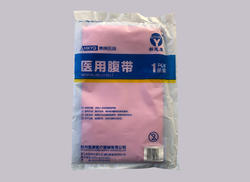There are many types of medical masks. Common medical disposable masks are disposable non-woven masks, gauze masks and anti-virus masks.
1. Disposable non-woven masks: Most of them are more than three layers, which can isolate bacteria and dust, and are disposable, safe and reliable, without the risk of secondary infection.
2. Gauze mask: a type of mask that has been used all the time, and has a wide range of applications in the fields of medical care and scientific research.
3. Anti-virus masks: mainly made of non-woven fabrics, with a filter layer in the middle. Generally, the filter layer is made of melt-blown cloth. It has the effect of sterilization and sterilization.

According to the performance characteristics, it can be divided into the following categories:
1. Medical protective masks
In line with the GB19083-2003 "Technical Requirements for Medical Protective Masks" standard, important technical indicators include non-oily particle filtration efficiency and airflow resistance:
(1) Filtration efficiency: Under the condition of air flow (85±2) L/min, the filtration efficiency of sodium chloride aerosol with aerodynamic median diameter (0.24±0.06) μm is not less than 95%, which is in line with N95 Mask (or FFP2) and above.
(2) Inhalation resistance: Under the above flow conditions, the inhalation resistance does not exceed 343.2Pa (35mmH2O).
2. Medical surgical masks
In line with the YY 0469-2004 "Technical Requirements for Medical Surgical Masks" standard, important technical indicators include filtration efficiency, bacterial filtration efficiency and respiratory resistance:
(1) Filtration efficiency: under the condition of air flow (30±2) L/min, the filtration efficiency of sodium chloride aerosol with aerodynamic median diameter (0.24±0.06) μm is not less than 30%;
(2) Bacterial filtration efficiency: Under the specified conditions, the filtration efficiency of Staphylococcus aureus aerosol with an average particle diameter of (3±0.3) μm is not less than 95%;
(3) Respiratory resistance: Under the condition of filtration efficiency and flow rate, the inspiratory resistance does not exceed 49Pa, and the expiratory resistance does not exceed 29.4Pa.
3. Ordinary medical masks
In line with the relevant registered anti-haze mask standards (YZB), generally lack of filtration efficiency requirements for particles and bacteria, or the filtration efficiency requirements for particles and bacteria are lower than medical surgical masks and medical protective masks.















